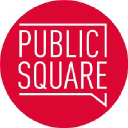Cross-View Meets Diffusion: Aerial Image Synthesis with Geometry and Text Guidance
Aerial imagery analysis is critical for many research fields. However, obtaining frequent high-quality aerial images is not always accessible due to its high effort and cost requirements. One solution is to use the Ground-to-Aerial (G2A) technique to synthesize aerial images from easily collectible ground images. However, G2A is rarely studied, because of its challenges, including but not limited to, the drastic view changes, occlusion, and range of visibility. In this paper, we present a novel Geometric Preserving Ground-to-Aerial (G2A) image synthesis (GPG2A) model that can generate realistic aerial images from ground images. GPG2A consists of two stages. The first stage predicts the Bird's Eye View (BEV) segmentation (referred to as the BEV layout map) from the ground image. The second stage synthesizes the aerial image from the predicted BEV layout map and text descriptions of the ground image. To train our model, we present a new multi-modal cross-view dataset, namely VIGORv2 which is built upon VIGOR with newly collected aerial images, maps, and text descriptions. Our extensive experiments illustrate that GPG2A synthesizes better geometry-preserved aerial images than existing models. We also present two applications, data augmentation for cross-view geo-localization and sketch-based region search, to further verify the effectiveness of our GPG2A. The code and data will be publicly available.





